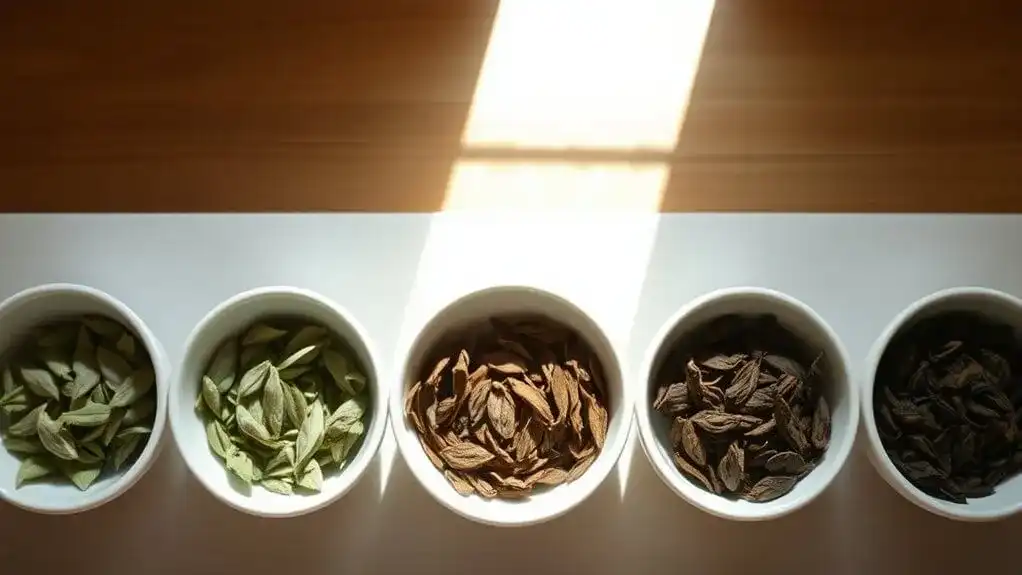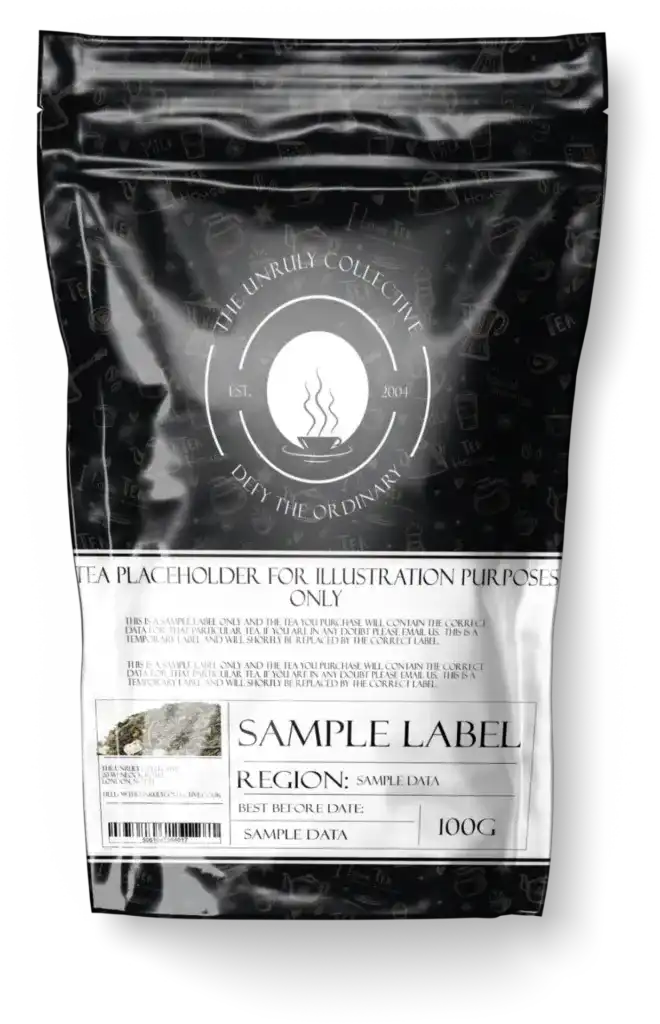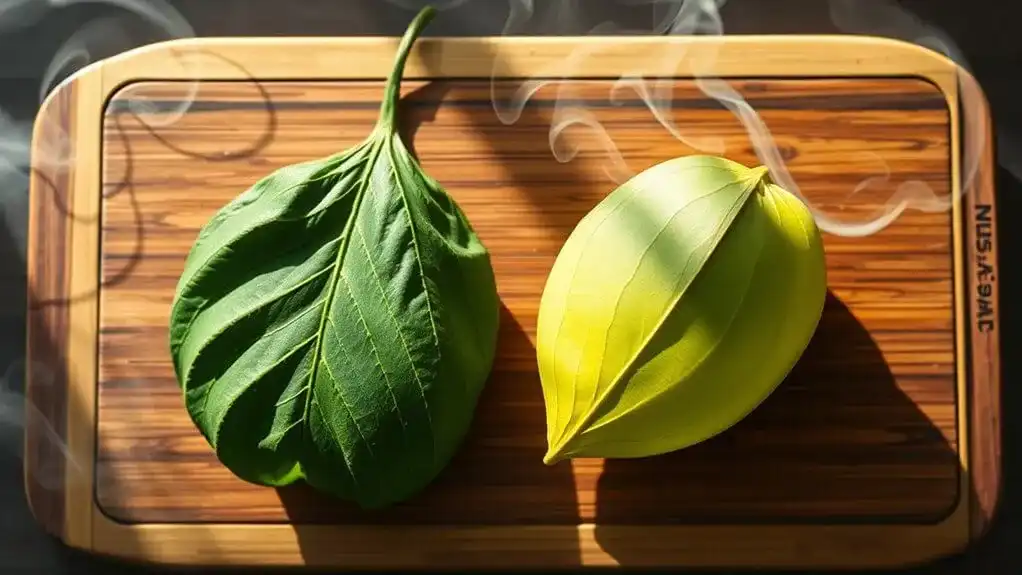Tea oxidation transforms fresh leaves into distinct varieties through enzymatic reactions, creating a fascinating spectrum of flavors and colors. White tea maintains its delicate nature with minimal oxidation, while yellow tea undergoes a unique wrapped process for subtle changes. Oolong teas span from light jade (10%) to dark (70%), developing complex profiles from floral to caramel notes. Black tea reaches full oxidation, offering rich, robust character. This journey through oxidation levels reveals tea's remarkable versatility and depth.
Key Points
- Tea oxidation occurs when enzymes convert catechins into theaflavins and thearubigins, creating darker colors and richer flavors.
- Light jade oolongs undergo 10-25% oxidation, producing delicate floral notes and maintaining their bright, fresh character.
- Medium oxidation oolongs (25-50%) develop honey-like characteristics while balancing fresh and rich flavor profiles.
- Dark oolongs reach 50-70% oxidation, resulting in deep caramel notes and roasted undertones with complex flavor layers.
- Temperature and humidity control (typically 80-85°F) during processing determines the final oxidation level and tea characteristics.
The Science Behind Tea Oxidation

Although tea enthusiasts often focus on flavor profiles, the science of oxidation plays an essential role in creating distinctive tea varieties. The oxidation process begins naturally when tea leaves are plucked, as cell damage triggers enzyme activity within the leaves. Two key enzymes, polyphenol oxidase and peroxidase, convert catechins into theaflavins and thearubigins, creating the characteristic colors and flavors found in different teas. Hand-harvested leaves maintain better cellular structure, which allows for more controlled oxidation rates and superior flavor development. Common fixing methods like pan firing help tea producers effectively halt the oxidation process at desired levels.
Tea producers carefully control this transformation through specific temperature and humidity conditions, typically maintaining environments between 80-85°F. They manipulate oxidation levels through various techniques like rolling, tumbling, or macerating the leaves. The process continues until it's halted by applying heat above 150°F, which denatures the enzymes. This scientific understanding enables producers to craft teas with precise oxidation levels, from minimally oxidized green teas to heavily oxidized oolongs. Modern producers often use vacuum sealed packaging to prevent further oxidation during storage and distribution.
White Tea: Nature's Delicate Gift

Among all tea varieties shaped by oxidation, white tea stands as the most minimally processed form. Cultivated primarily in China's Fujian Province, it undergoes just three simple steps: picking, withering, and drying, with careful oxidation control to preserve its delicate essence. During processing, tea masters must carefully monitor the minimal oxidation exposure to maintain its distinctive characteristics. The eco-friendly cultivation supports sustainable farming practices and biodiversity preservation. Traditional producers prefer to dry the leaves under natural sunlight for optimal flavor development.
The tea's flavor profile exhibits subtle floral and fruity undertones, complemented by honey-like aromas. When brewed at 175-190°F for 3-5 minutes, white tea reveals its gentle character. Silver Needle, White Peony, and Long Life Eyebrow represent its most cherished varieties.
Beyond its refined taste, white tea offers remarkable health benefits. Its high antioxidant content supports heart health and weight management, while its low caffeine levels provide a gentle energy boost. This makes it an ideal choice for those seeking both wellness and sophisticated refreshment.
Yellow Tea: A Rare Art of Processing

While white tea represents minimal processing, yellow tea showcases the artistry of precise oxidation control through its unique "Men Huang" process. This rare tea begins with hand-picked buds and tender leaves that undergo careful withering and initial heating. The defining step involves wrapping the leaves in cloth, allowing them to undergo controlled oxidation that creates unique flavors between white and green tea. The process carefully balances amino acid degradation during oxidation to achieve its distinct taste profile.
Master craftsmen carefully monitor this "yellowing" process, which encourages the leaves to release and reabsorb moisture while developing their characteristic golden hue and silky smooth finish. The complex process can take up to three full days of meticulous monitoring and adjustments. Primarily produced in select regions of China, such as Anhui, Hunan, and Sichuan provinces, yellow tea remains one of the most exclusive varieties, often reserved for special occasions and distinguished clients. Its production methods are held in such high regard that only a select few tea masters in China retain the complete knowledge of its traditional processing techniques.
The Sweet Spot: Oolong's Balanced Character
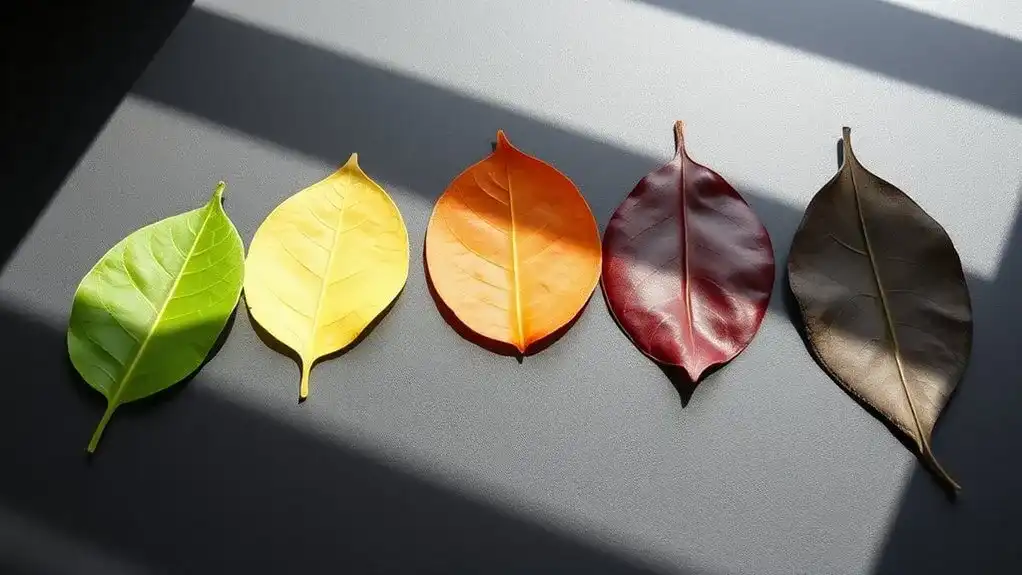
Located between green and black teas on the oxidation spectrum, oolong tea represents a masterful balance of processing techniques that create its distinctive character. The oxidation impact varies greatly, ranging from 10% to 70%, resulting in diverse flavor profiles that showcase the tea's remarkable versatility. Complex processing methods take several days and require skilled sensory evaluation to achieve optimal results.
This flavor evolution becomes evident across different oxidation levels. Light oolongs (10-25%) deliver fresh floral and fruity notes, while medium oxidation (25-50%) produces honeyed characteristics. Dark oolongs (50-70%) develop rich, caramel-like flavors with pronounced roasted undertones. The roasting process reduces caffeine content while concentrating the tea's distinctive aromas. Regional influences further shape these profiles, with Taiwanese oolongs known for their creamy, floral notes and Chinese varieties offering robust, fruity characteristics. Factors like altitude, soil conditions, and tree age contribute to each oolong's unique balanced character. The popularity of Taiwanese oolong continues to grow, with the region producing 20% of global production today.
Dark Depths: Black Tea's Full Expression
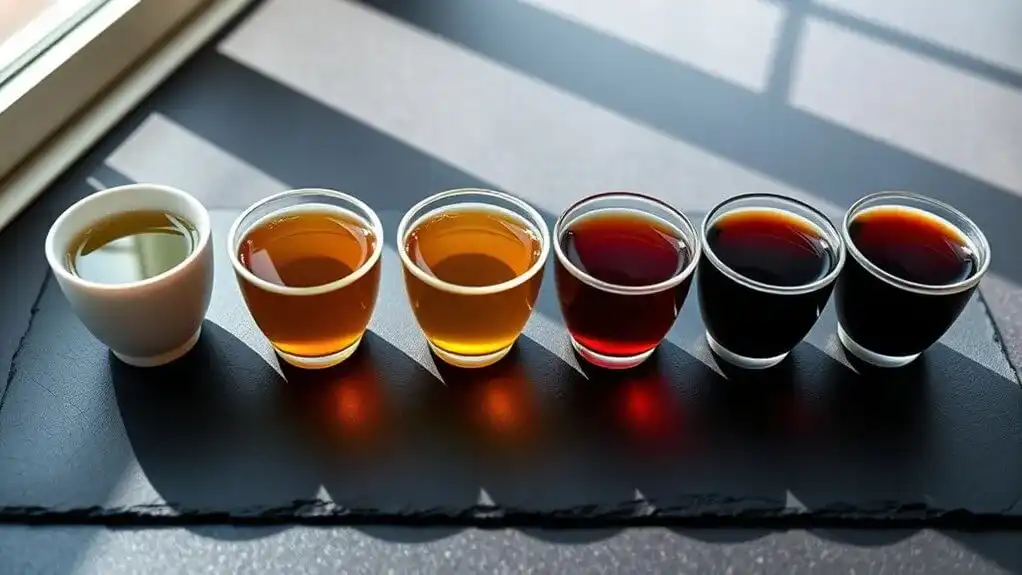
At the far end of the oxidation spectrum lies black tea, representing the fullest expression of tea processing through complete oxidation. The journey to achieving its distinctive flavor profiles begins with careful withering, which reduces moisture content to 60-70% over 12-17 hours. Traditional rolling machines then break the leaves, initiating the vital oxidation stages. The amino acid release during processing contributes significantly to the tea's fundamental taste.
CTC processing creates small granulated particles that result in a quicker, more intense brew compared to orthodox methods. In controlled environments of 90-95% humidity at 71°F, leaves undergo a transformation lasting up to three hours. During this time, enzymes react with air, turning the leaves brown and developing the tea's characteristic strength. The process concludes with a final drying phase that brings moisture down to 3%, effectively halting oxidation. This meticulous process guarantees black tea's robust character, though it's worth noting that some teas labeled as black, like Hong Cha, actually achieve 80-95% oxidation. Its popularity is evident as most commonly consumed tea throughout the world.
Beyond Oxidation: Post-Fermented Treasures
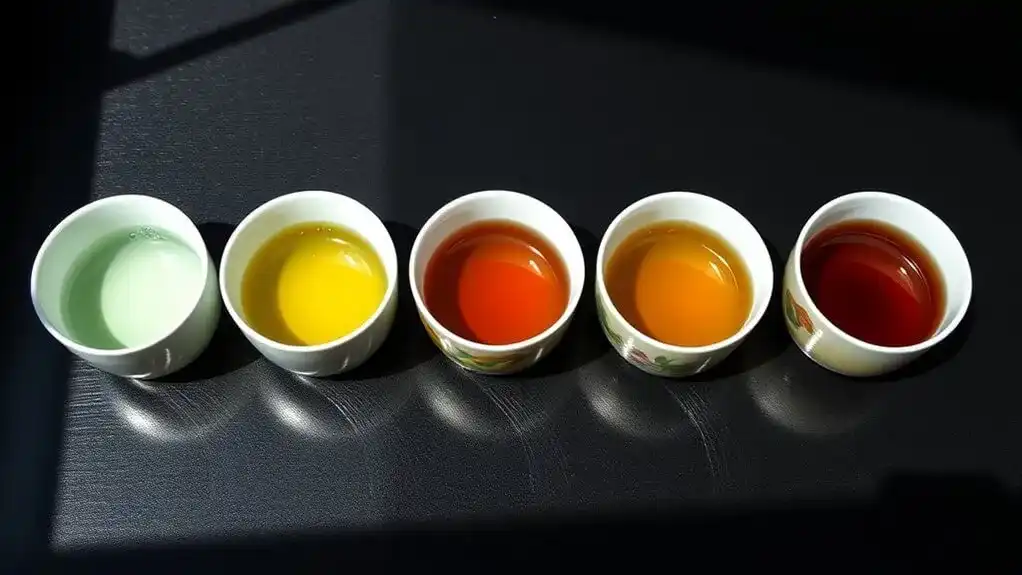
Beyond traditional oxidation lies a fascinating domain of post-fermented teas, where microbial activity transforms leaves into complex treasures. Under controlled temperature and humidity, microorganisms break down tea compounds over days, weeks, or months, creating unique characteristics found in teas like Pu-erh and Goishicha. The fermentation process requires carefully selecting high-quality leaves from Camellia sinensis to ensure optimal results. In Japan, these special teas are produced through three fermentation methods that can be aerobic, anaerobic, or a combination of both. Each stage requires oversight from skilled tea masters to achieve optimal results.
The post fermentation benefits extend beyond flavor complexity. These teas support digestive health, boost antioxidant levels, and may enhance metabolic function through the gut-brain axis. They've earned attention for potentially aiding cardiovascular health and mental well-being.
Like fine wines, post-fermented teas develop intricate flavor profiles, featuring earthy notes, umami richness, and subtle sweetness. This complexity, combined with growing awareness of their health benefits, has sparked increasing market demand and consumer interest in these functional beverages.
Brewing Techniques for Different Oxidation Levels
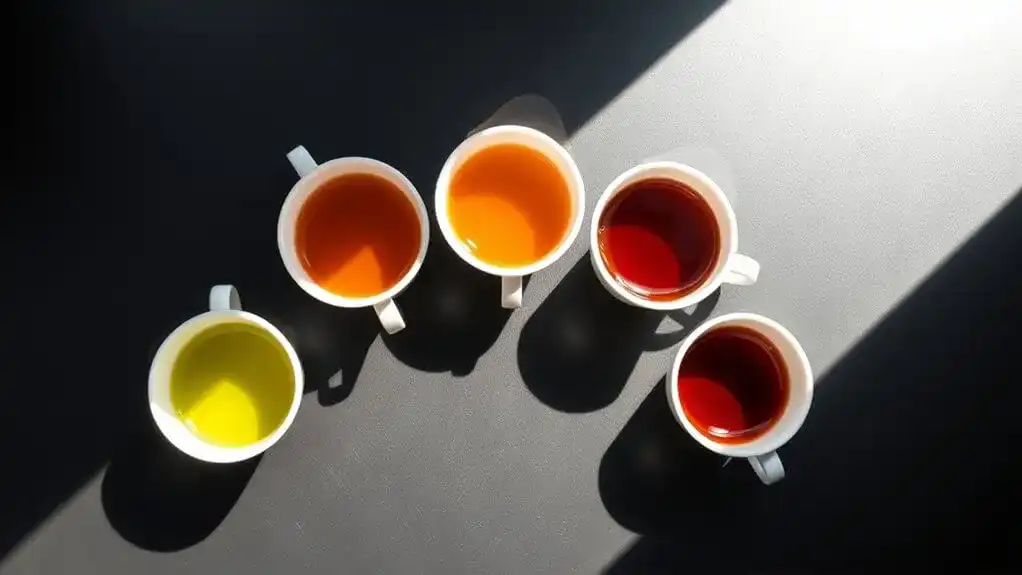
Mastering the art of brewing tea requires a deep understanding of how oxidation levels influence preparation techniques. The key to perfect tea lies in adjusting brewing variables according to oxidation levels.
Low oxidation teas thrive with gentle treatment, requiring water temperatures of 80-85°C and shorter steeping times. They're best prepared in appropriate vessels like red clay teapots, which enhance their delicate flavors. For lighter teas, white porcelain bowls provide an excellent way to observe the tea's true color and character. For delicate white teas like Silver Needle, cold water brewing can produce exceptional results with a fresher, thicker taste when steeped for over an hour. Medium oxidation teas, particularly oolongs, need slightly higher temperatures of 90-95°C and benefit from aeration during brewing. The process allows their complex profiles to develop fully.
High oxidation teas demand the hottest water temperatures, ranging from 95-100°C, and longer brewing times. These robust teas, including black tea and ancient tree varieties, need careful attention to leaf quality to prevent unwanted bitterness.
Conclusion
Tea's transformation from pristine jade to midnight oolong isn't just chemistry – it's nature's poetry in motion. Like a painter's palette blending from soft pastels to rich earth tones, oxidation crafts each tea's unique character. Whether you're drawn to the whispered sweetness of white tea or the bold declaration of black, understanding these levels reveals a world where science meets artistry in your cup.
